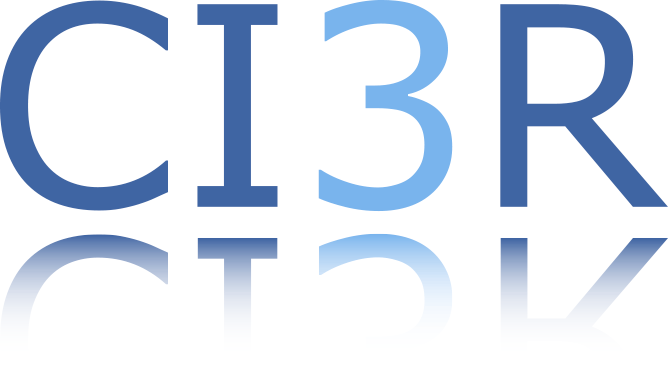The BORIS2 project “Cross BOrder RISk assessment for increased prevention and preparedness in Europe: way forward”, funded by the Directorate-General for European Civil Protection and Humanitarian Aid Operations (DG-ECHO), GA n. 101140181, builds on the results of BORIS project, ended in 2022. Considering the need expressed by local civil protections involved as stakeholders in BORIS, particularly to enhance the multi-risk analysis methodology proposed for an effective use towards emergency planning, the BORIS2 goal is to deliver a methodology and tool to support stakeholders to undertake strategic decisions to improve emergency planning. The multi-risk analysis methodology developed in BORIS, that was implemented at municipality scale, will be modified for application at sub-municipal level (e.g. at census tract level or for square grid units) considering relevant multi-risk scenarios. This will enable to highlight urban areas that are most impacted by single and multiple risks for a better planning of emergency phase. Moreover, critical infrastructures and their connections will be included for the evaluation.
Expanding on the concept of Limit Condition for the Emergency, a multi-risk approach that could be applied also in cross-border regions will be proposed delivering a comprehensive methodology for institutions operating in different national context. A “scenario-driven” approach will be tested for the assessment of the impacts of seismic, flood or multi-risk events on assets and infrastructures relevant for emergency management. Results of BORIS2 will be integrated in the existing BORIS platform, ensuring its interoperability.
Coordinator: CI3R – Affiliated entities CIMA, EUCENTRE, ReLUIS, OGS
Partners: University of Ljubljana (UL); DISASTER COMPETENCE NETWORK AUSTRIA (DCNA); University of Montenegro (UoM); TED University (TEDU)
Associated Partners: University of Udine (UNIUD); Regione autonoma Friuli-Venezia Giulia (Regione FVG)
The activities performed within ROADMAP highlighted some specific challenges that need to be overcome to achieve an effective progress in the construction of an active and involved community to improve the knowledge, understanding and replicability of GPs in DRM.
To achieve the global objectives, ROADMAP 2 project activities will focus on:
- to establish a Community for the European Observatory (CEO) of Good Practices, to improve the knowledge, understanding and replicability of GPs in DRM, starting from the engagement rules of the ROADMAP Advisory Group.
- the construction of a solid framework – stemming from the Sendai Framework – to identify and evaluate GPs, enabling to establish to what extent a GP in DRM can be replicable in different contexts or it works only in given context (depending on time-frame, territorial scale, social context, etc.).
- to engage stakeholders in sharing GPs directly in the Solution Explorer
- to establish sound criteria for identifying and assessing GPs, as well as for creating concrete scenarios where to apply these GPs.
BORISPROJECT.EU
Development of a shared methodology for the management of transboundary seismic and flood risk
Funded by the Directorate-General for Civil Protection and European Humanitarian Aid Operations (DG ECHO), BORIS will develop a shared methodology for cross-border seismic and flood risk management.
The project area, the Eastern Alps, including the Italian – Slovenian-Austrian borders, as well as the region of South-Eastern Europe – is in fact characterized by strong seismicity and hydro-meteorological risks. To establish coordinated transboundary approaches able to assess and communicate those risks, BORIS will firstly do an overview of the existing methodologies for flood and seismic risk assessment in the countries involved (Italy, Slovenia, Austria, Turkey and Montenegro)
Based on such analysis, a shared methodology for single and multi-risk assessment will be developed to assess the expected impacts for single natural hazards and to do a comparison with multi-risk impacts in those transboundary regions. The strategy will be tested in some pilot sites.
The project also aims to develop a platform for single and multi-risk assessment which will facilitate the visualization, storage, updating of data, models, documentation and the representation of damage and impact data following a common metrics approach.
ROADMAP.CI3R.IT
Definition of common policies on risk management and collection of good practices developed in EU
and Associated Countries to improve risk governance at international level.
Funded by the Directorate-General for Civil Protection and European Humanitarian Aid Operations (DG ECHO), ROADMAP will channel the outcomes achieved over the years by the disaster risk scientific community to policy makers and risk managers.
The aim is to improve risk governance and promote its positive impact for safer communities. Under this light, ROADMAP will link national and EU risk management initiatives in order to define common risk policies. The project will also highlight best practices from different Member States and Associated Countries which can become a standard reference for future national and European initiatives
Specifically, the project will lead to the definition of a “European Doctrine on Disaster Risk and Crisis Management”.
Following a bottom-up approach, ROADMAP will not only collect good practices, but it will also share them through bulletins and periodical publications. The outcome will be a vision paper in which the results of the thematic work will be elaborated and systematized, outlining the actions needed to translate scientific knowledge into effective tools and procedures for disaster risk policy making.




